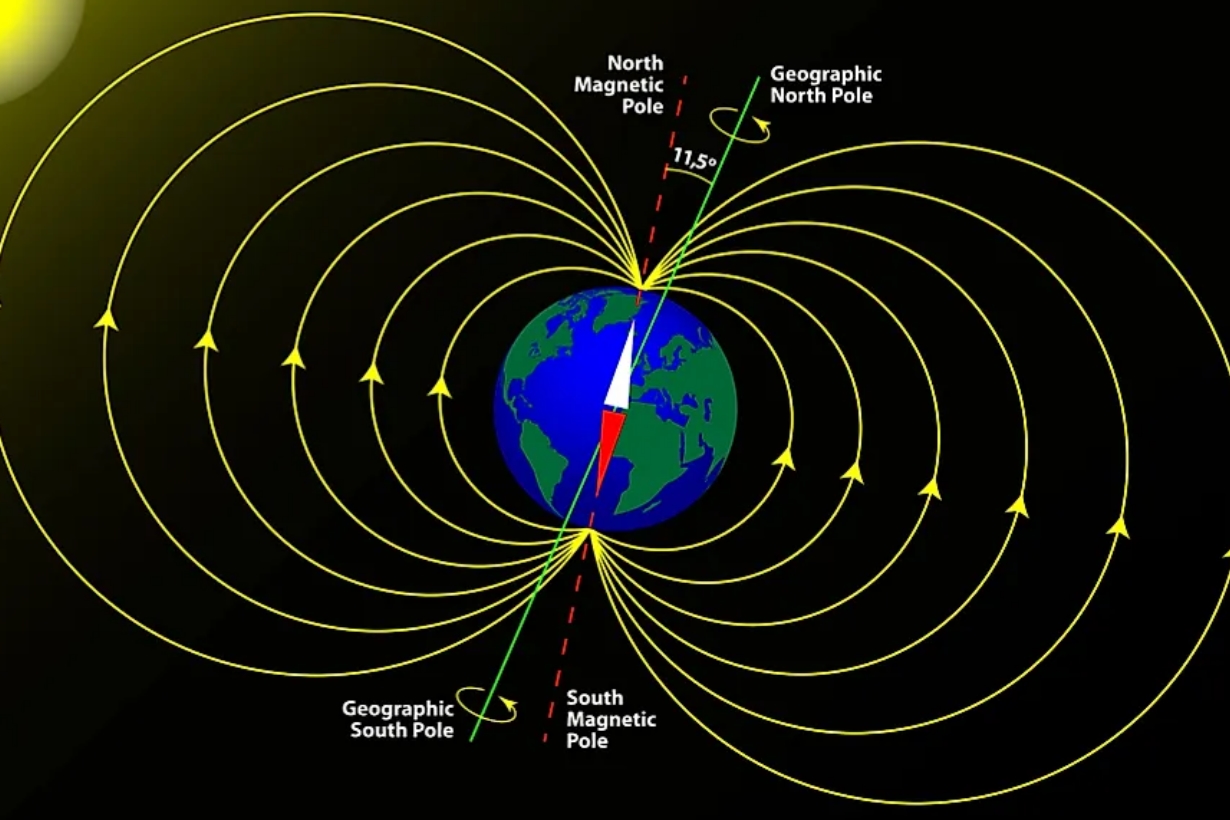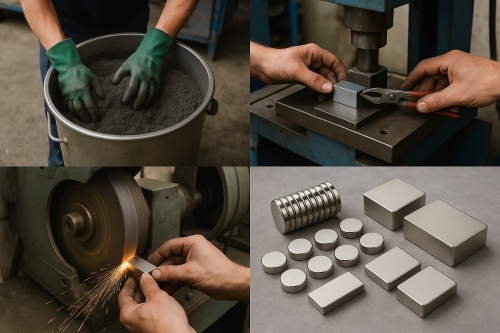The Development of the NdFeB Magnet Industry
After entering the 21st century, the global production of rare earth permanent magnets represented by sintered NdFeB magnets has entered a period of rapid growth. Among them, China has become the world's largest production base for sintered NdFeB magnets, bonded NdFeB magnets, and sintered SmCo magnets, accounting for more than 85% of the world's total output. In this article, let's take a look at the development of the NdFeB magnet industry.
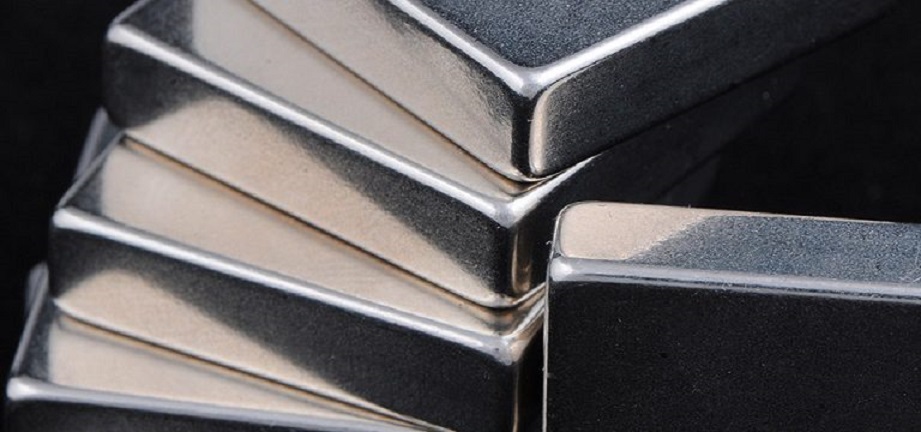
The Development of the NdFeB Magnet Industry
1. The Development of the Sintered NdFeB Magnet Industry
Sintered NdFeB magnets have been widely used and continue to develop since they were invented because of their high performance and low cost. The figure below shows the year-by-year changes in the output of global sintered NdFeB magnets. It reflects the development of the NdFeB magnet industry around the world. As can be seen from the figure, the development of the sintered NdFeB industry can be divided into two stages. 1987-2002 was the first 15 years, with a high growth rate but a small volume. The average annual growth of finished products in China and the world was 590 tons and 1,030 tons respectively. 2002~2017 is the second stage, the growth rate has slowed down, but the volume has been enlarged. The average annual production growth in China and the world was 6,310 tons and 6,920 tons, respectively. Since the beginning of the 21st century, although the development of the sintered NdFeB industry in developed countries such as Japan, the United States, and Europe has slowed down, due to the extraordinary development of China's sintered NdFeB industry, the global rare earth permanent magnet industry has maintained a rapid growth trend. In 2017, China's output of sintered NdFeB finished products was 104,000 tons, an increase of 8.8% over the previous year; the global output was about 120,000 tons, and China accounted for 87% of the global share.
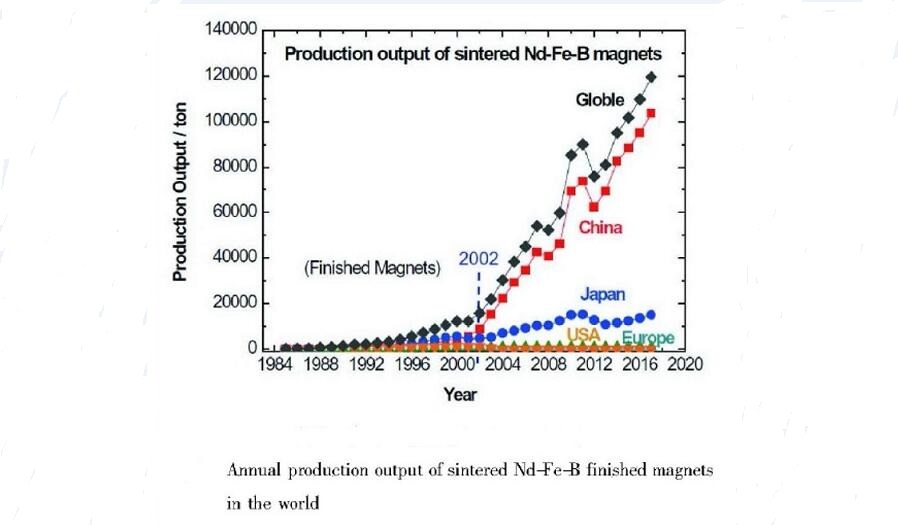
The Development of the Sintered NdFeB Magnet Industry
2. The Development of the Bonded NdFeB Magnet Industry
Although the bonded NdFeB industry started at the same time as sintered NdFeB magnets, its volume is small and the output is less than one-tenth of that of sintered NdFeB magnets. Magnequench moved its factory from Indiana, USA to Tianjin, China in 2000. It not only relies on a strong patent monopoly to occupy more than 80% of the market share but also controls the supply of high-performance NdFeB magnetic powder. In recent years, the output of Magnequench magnetic powder is about 6000 tons, of which four-fifths are used to prepare bonded magnets, and about one-fifth is used to prepare hot-pressed/hot-deformed magnets. Most of the global bonded NdFeB magnet manufacturers are concentrated in China, Japan, and Southeast Asia. The figure below shows the annual growth of global bonded NdFeB magnets. As can be seen from the figure below, China's bonded NdFeB industry has continued to develop in the past 20 years, and the output of other countries or regions has not changed much. During the 15 years from 2002 to 2017, the average annual growth rates of China and the world were 10.1% and 5.6%, and the average annual production growth was 337 and 313 tons, respectively. In 2017, the output of bonded NdFeB in China was 6,600 tons, an increase of about 10% over 2016, accounting for 76% of the global share. During the 10 years from 2007 to 2017, China's average annual growth rate was 8.2%, and the global average annual growth rate was 6.0%.
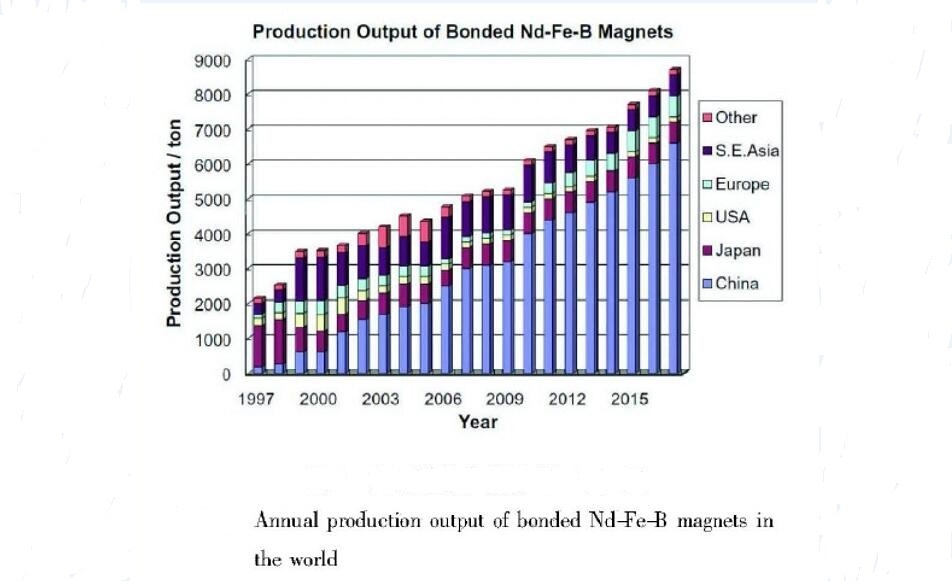
The Development of the Bonded NdFeB Magnet Industry
Conclusion
Thank you for reading our article and we hope it can help you to have a better understanding of the development of the NdFeB magnet industry. If you want to learn more about NdFeB magnets or other types of magnets, we would like to advise you to visit Stanford Magnets for more information. As a leading magnet supplier across the world, Stanford Magnets has been involved in R&D, manufacturing, and sales of magnets since the 1990s. It provides customers with high-quality permanent magnets like SmCo magnets, neodymium magnets, AlNiCo magnets, and ferrite magnets (ceramic magnets) at a very competitive price.













